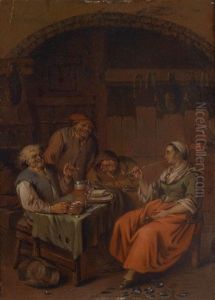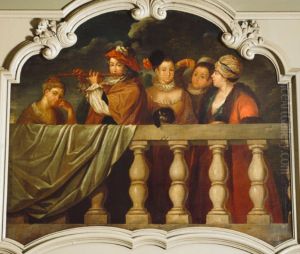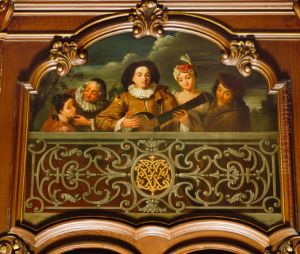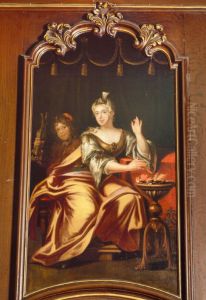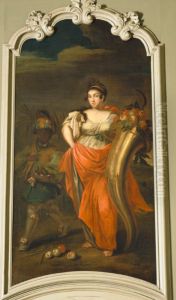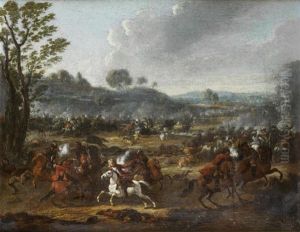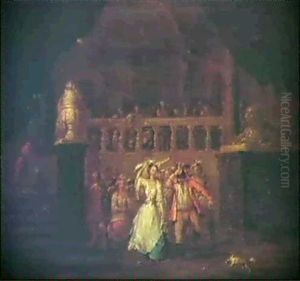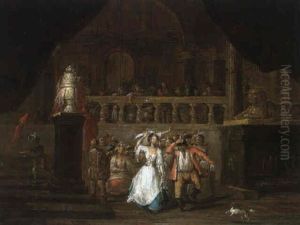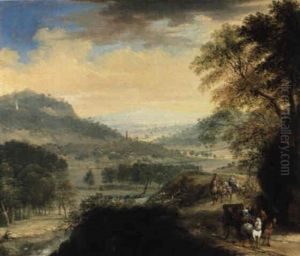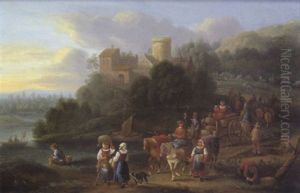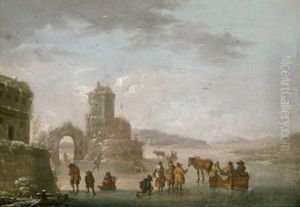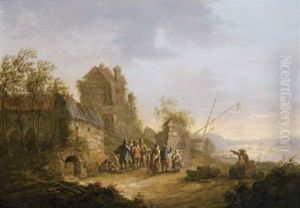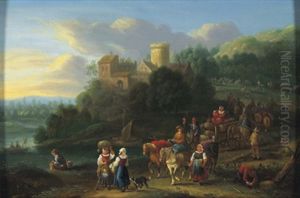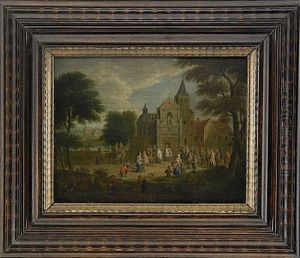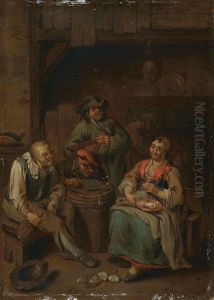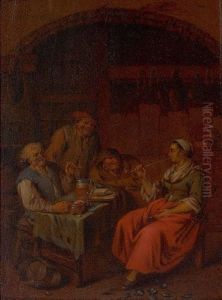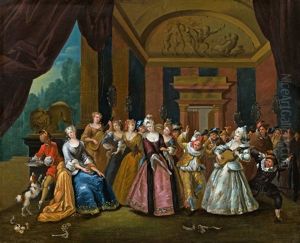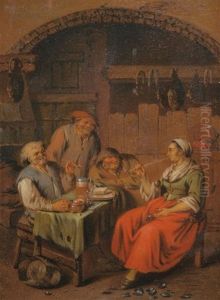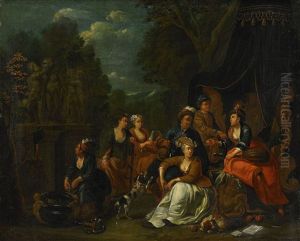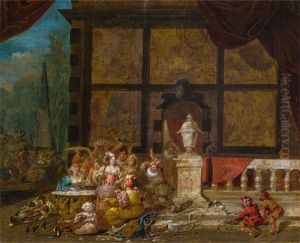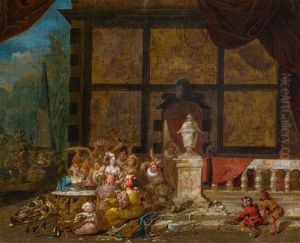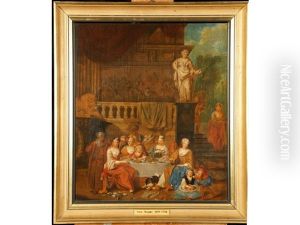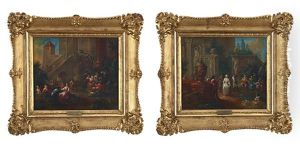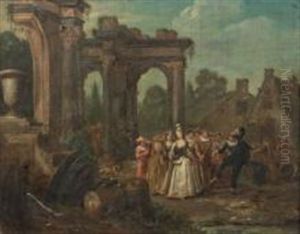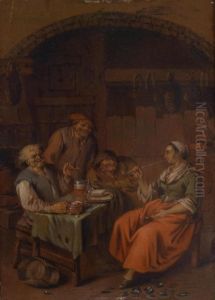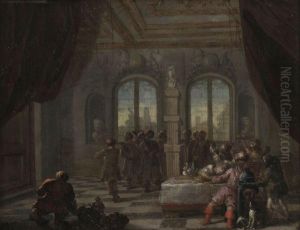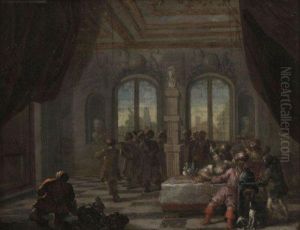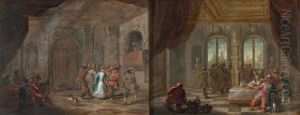Frans Breydel Paintings
Frans Breydel, also known as Frans Breydel the Elder, was a Flemish painter born in Antwerp, Belgium, in 1679. His work primarily falls into the category of Baroque painting, which was prevalent during his time. As a member of a family of artists, Breydel was born into an environment conducive to developing his artistic skills. Unfortunately, detailed records of his early life and training are scarce, but it is known that he became a master in the Guild of St. Luke in Antwerp in 1699, indicating that he had completed the necessary training and apprenticeship to be recognized as a professional painter.
During his career, Breydel specialized in genre scenes, landscapes, and seascapes. He was particularly noted for his ability to depict light and atmosphere in his paintings, a characteristic of the Baroque style that sought to evoke emotion and movement. His genre scenes often captured the lively spirit of peasant life, with a keen eye for detail and a vibrant palette that brought his subjects to life.
Although Breydel's work was well-regarded during his lifetime, he did not achieve the same level of fame as some of his contemporaries. He spent his entire career in Antwerp, and it is believed that his works were mostly sought after by local patrons and collectors. Despite this, Breydel's contributions to the Flemish painting tradition were significant, and his paintings can be found in various European art collections.
Frans Breydel passed away in Antwerp in 1750. His legacy is preserved through his paintings, which continue to be appreciated for their technical skill and embodiment of the Baroque sensibility. His son, also named Frans Breydel but known as Frans Breydel the Younger, followed in his father's footsteps and became a painter as well, although the elder Breydel remains the more recognized artist. Breydel's work is a testament to the rich artistic heritage of Flanders and offers insight into the cultural and social dynamics of his era through the lens of art.
